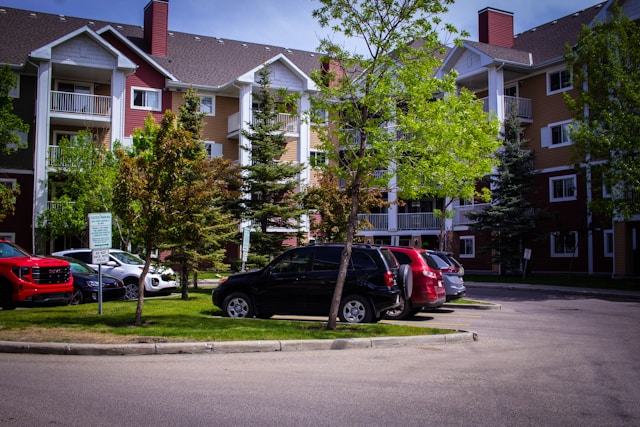Seasonal or short-term rentals can deliver attractive returns—but only when managed strategically. Because your income fluctuates with demand cycles, maximizing profits from seasonal rentals requires more than passive ownership. In this article, we dive into advanced strategies to improve cash flow, reduce vacancy risk, and scale your seasonal portfolio intelligently.
We’ll also weave in internal resources on metrics, leasing, scaling, and remote management:
- Cap Rate vs. ROI: How Property Managers Help Analyze
- Cash Flow Optimization Through Strategic Leasing
- Scaling a Property Portfolio with Professional Management
- Managing Canadian Rentals from Abroad: How to Stay Profitable, Compliant, and Stress-Free
1. Understand Your Seasonal Demand Curve
Before optimizing profits, you need to map occupancy cycles:
- Peak months: Summer, major holidays, local events
- Shoulder months: Spring, fall transitions
- Off-season: Winter or periods with low tourism
Track your historical bookings to quantify peak vs off-season variance. This demand curve becomes your roadmap: lease your property when possible, but plan for lean months. Because seasonal rentals inherently have variability, you’ll want to overlay that demand curve onto your financial modeling (see the importance of metrics in Cap Rate vs. ROI: How Property Managers Help Analyze).
2. Dynamic Pricing & Smart Rate Adjustment
Flat pricing doesn’t cut it in seasonal markets. Use dynamic pricing tools or algorithms to shift rates based on supply/demand, lead time, and local events.
Best practices:
- Set base rates in shoulder/off-season to cover operating costs.
- Apply surge pricing during holidays or high-demand weekends.
- Use minimum night stays or premium cleaning fees for short stays.
- Always leave margin for flexibility—don’t price yourself out when competition is low.
This is a form of strategic leasing, scaled over time. To learn more about how strategic lease structuring improves recurring income, see Cash Flow Optimization Through Strategic Leasing.
3. Optimize Occupancy: Blending Short-Term & Medium-Term Stays
A purely nightly short-term model can lead to high vacancy during lulls. One way to smooth revenue is to layer in medium-term leases (30–90 days) during off-peak windows.
- In off-season months, offer special rates for monthly stays.
- Target remote workers, students, or professionals needing temporary housing.
- Use overlap windows: in shoulder months, allow overlap between short-term and medium-term guests.
This mix helps guarantee baseline occupancy, reducing revenue risk in slow seasons.
4. Service & Experience: Justify Higher Rates & Encourage Repeat Guests
In seasonal rentals, the guest experience is a key differentiator. Better service means better ROI and better reviews.
- Provide concierge-level touches: local guides, welcome gifts, smart locks with remote check-in.
- Maintain immaculate upkeep: frequent deep cleans, landscaping, pest control.
- Be responsive to requests and issues—delays in resolving a broken heater can cost you guests and referrals.
Delighting guests increases your ability to raise prices, reduce vacancy, and harvest repeat bookings—essential levers for profitability.
5. Reduce Operating Costs Without Cutting Value
Because seasonal rentals often bear higher wear and tear and cleaning costs, controlling expenses is pivotal:
- Build relationships with reliable local vendors and negotiate bulk discounts.
- Use energy-efficiency upgrades (LED lighting, smart thermostats) to reduce utility costs.
- Automate scheduling of maintenance so you avoid emergency repair markups.
- Use software or management firms to centralize vendor billing and budget tracking.
Monitoring and forecasting these costs tie directly into your financial models. As your portfolio grows, you’ll want systems that let you see cost trends across properties (a topic covered in Scaling a Property Portfolio with Professional Management).
6. Lease Structuring & Booking Policies That Protect You
Because your property is only “in service” part of the year, your booking policies and lease terms must reflect that:
- Require advanced deposits and nonrefundable booking fees.
- Institute clear cancellation policies (e.g. partial refund windows).
- Stipulate minimum cleaning/restoration hold times between bookings.
- Limit liability and damage costs with well-defined guest responsibilities.
These protections help you avoid last-minute cancellations, damage risk, or lost revenue windows.
7. Use Metrics & Forecasting to Guide Investments
To maximize profits over a portfolio of seasonal assets, you need to think long term. Track and benchmark:
- Yield per stay / per night
- Vacancy days vs target
- Total annual revenue vs fixed costs
- Cap rate / projected ROI for seasonal properties
Leverage internal and external data to create forecasting models. When evaluating new acquisition opportunities in the seasonal space, compare projected cash flows, cap rate, and ROI in your decision. Use insights from Cap Rate vs. ROI: How Property Managers Help Analyze to balance valuation and returns.
8. Scaling Your Seasonal Portfolio (from One to Many)
Once one property is operating smoothly, you can consider scaling—but only if systems and management can scale with you.
- Centralize operations (cleaning contracts, vendor networks, booking management).
- Standardize guest experience across properties.
- Use consistent pricing models and dynamic pricing tools across your portfolio.
- Monitor each property’s cash flow and guide investment decisions. For more on growth strategy and governance, refer to Scaling a Property Portfolio with Professional Management.
If you’re investing from outside Canada, bring in a local team to manage compliance, legal oversight, and day-to-day issues. You can find more about remote ownership strategies in Managing Canadian Rentals from Abroad: How to Stay Profitable, Compliant, and Stress-Free.
9. Seasonal Cash Flow Buffer & Risk Planning
Profits will fluctuate. Build protections:
- Maintain a reserve fund equal to 3–6 months of operating costs.
- Diversify location risk (if one region’s off-season is harsh, others may offset).
- Use property insurance that covers extended vacancy risk or guest damage.
- Reassess annually if the seasonal model remains viable for each property.
This buffer makes your portfolio resilient—even if one property underperforms in a weak year.
Conclusion
Seasonal rentals can be profitable, but only when treated like a business. You must manage demand swings, pricing, operating costs, guest experience, lease policies, and portfolio scalability with intention.
- Use dynamic pricing and occupancy layering
- Streamline operations and vendor management
- Structure bookings to protect revenue
- Track metrics, forecast intelligently, and expand only when systems can sustain growth
By combining these tactics with your deep understanding of valuations, leasing, and scaling (as shown in your internal resources), you can build a thriving seasonal rental portfolio that yields over the long run.





